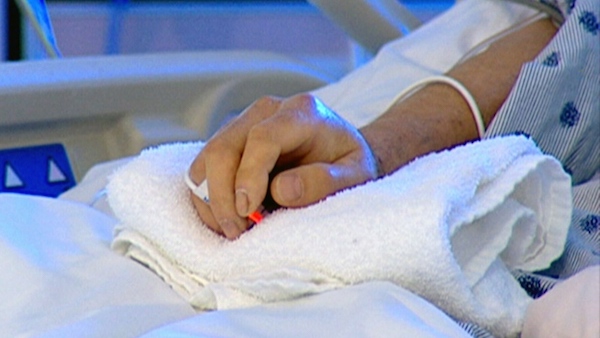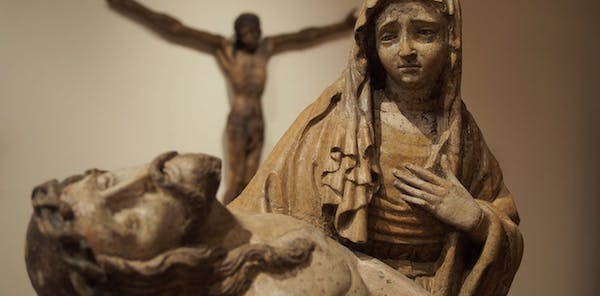How language plays a role in the assisted dying debate

By Howard Manns
[A]rguments in the “euthanasia debate” (as it is colloquially referred to in Australia) hinge in part on the language used to describe “death”.
The inevitability and permanence of death make it a taboo fraught with fears (such as fear of losing loved ones, fear of the afterlife, fear of what happens to the body after death).
When it comes to fear, politicians are slick verbal smugglers, sneaking messages under our noses. Conservative pollsters found “global warming” was scary so they gave us “climate change”. Richard Nixon knew white voters afraid of minorities would respond well to “law and order”.
Those involved in the “euthanasia debate” draw on similar tactics. Are we talking about “assisted dying” – as the name of the bill suggests – or are we talking about “assisted suicide”? Does it even matter?
Debating a ‘good death’ in the Victorian parliament
Three terms loomed large a few weeks ago in the debate in parliament: “euthanasia”, “assisted dying” and “assisted suicide”.
Those who supported the Voluntary Assisted Dying (VAD) Bill tended to use the phrase “assisted dying” throughout the debate. A preliminary token count (factoring out references to the name of the bill) shows 678 references to “assisted dying” from October 17-19. The lion’s share of these were made by the bill’s proponents.
Conversely, those who opposed the bill favoured the terms “euthanasia” and “assisted suicide”. There were 264 references to “euthanasia” and 205 to “assisted suicide” across the three days. These terms were most often used by the bill’s opponents.
In fact, the bill’s opponents took issue with its euphemistic tone. Deputy Premier James Merlino argued in the debate that “language is important” and pointed out the reticence of the bill’s proponents to use “confronting words” like “euthanasia” or “suicide”.
Also during the debate, opponents made multiple references to comedian/actor Liz Carr and her show Assisted Suicide: The Musical.
Liberal MP Robert Clark highlighted one particular scene in Carr’s play in which societies engaging in euthanasia seek the most “palatable term” for what they do. These societies acknowledge, in Clark’s words, “to call it by its true name would be a big setback for their cause”.
Why do these words matter to politicians? Should they matter to us?
To name the tiger or to not name the tiger?
Cultures avoid naming the things they fear the most.
The Batek, a nomadic group inhabiting peninsular Malaysia’s tropical forests, fear and revere tigers. Consequently, hunters often use avoidance terms like “animal of the forest” or the mocking “smelly paws” to discuss them.
Modern English speakers linguistically dance around the concept of death with the same care and mocking humour as the Batek do the tiger. Among other things, we frame death in terms of “rest” (“rest in peace”), “loss” (for example, “my condolences on your loss”) and “a journey” for “the departed” (“pass away” originally referred to the soul’s “departure” from the body for the “journey” to heaven or hell).
We can also, with an irreverent nod to dark humour and idiomatic expression, “buy the farm”, “push up daisies” or “kick the bucket”. These seemingly frivolous statements can often have dark origins. For instance, “kick the bucket” is likely either a reference to suicide by hanging or an old way of killing of pigs (in both cases, the living thing is tied to a beam, and a bucket kicked from under them).
Such dark humour perhaps enables us to cope with death by downgrading its significance.
Returning to the current debate, opponents of Victoria’s VAD bill most commonly use the terms “euthanasia” and “assisted suicide”. They are sometimes used interchangeably, but also separately, as they have differing meanings (the former entails more direct involvement of a doctor or another person).
The Oxford English Dictionary (OED) traces the earliest uses of “euthanasia” to the mid-17th century, deriving from the Greek eu- “good or well” and thanatos “death”. It is worth noting in light of the current debate that this eu- also appears in “euphemism” – loosely, “good speaking”.
Euthanasia originally had this general sense of “good death” until the 18th and 19th centuries when it came to signify the “means” or “actions” to bring on a good death.
Words associated with taboo topics often taken on negative connotations, and euthanasia is no exception. We see similar processes at work with “coffin”, which once meant a “small basket” in French, and was originally a reference to the container in which we place our dead.
Opponents of the VAD bill also draw on the negative connotations of “assisted suicide”. Suicides are, of course, highly stigmatised. Moreover, the use of “suicide” conjures up a series of other negative words containing the element –cide (from the Latin “slayer of”), including “homicide” and “fratricide”.
Many of these –cide words are first noted in English in the 15th century but “suicide” (from the Latin suī “of oneself”) did not appear until the 18th century. Before this, the act was known, among other things, as “self-destruction”, “self-homicide”, “self-murder” and “self-slaughter”. The OED notes the first appearance of “assisted suicide” in 1976.
Proponents of the VAD bill favour “assisted dying”, which, of course, is in the name of the bill itself. The OED shows the first appearance of “assisted dying” in 1988 in the British magazine The Contemporary Review. It appears in an article referencing Sigmund Freud’s request that his life end early rather than suffer unduly from his inoperable cancer.
The term “dying” is arguably the more neutral of the two terms (though how accurately it represents the act will relate to one’s philosophical or religious viewpoint).
While we are squeamish about the concept of death, we may be coming to terms with the use of the word “death” itself. Linguists Keith Allan and Kate Burridge studied obituaries and “In Memoriam” notices in the early 2000s, and found only a single of these contained the verb “die” or the noun “death”.
However, last year PhD scholar Pawel Migut studied online obituaries and found “died” to be the most common reference to the process in 12 US states (“passed away” seemingly remains the most common euphemism across the US on the whole).
Naming the tiger or slick political strategy?
Politicians’ choices to use “euthanasia” and “assisted suicide” or “assisted dying” have demonstrable political impact, as evidenced by a 2013 Gallup poll.
This poll found that 70% of Americans supported ending “a patient’s life by some painless means” when they were suffering from an incurable disease. However, support dropped to 51% when Americans were asked whether they supported a request to “assist the patient to commit suicide.”
So then, it is worth noting that the selection of “assisted dying” or “assisted suicide” might reflect our pollies’ attitudes. But it just as equally may be an effective political act, playing to our fears of death, and those words we use to name, or either to not name, our cultural tiger.
Complete Article ↪HERE↩!







